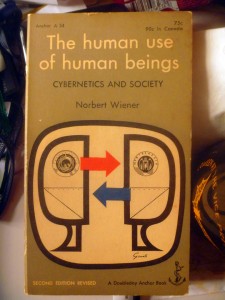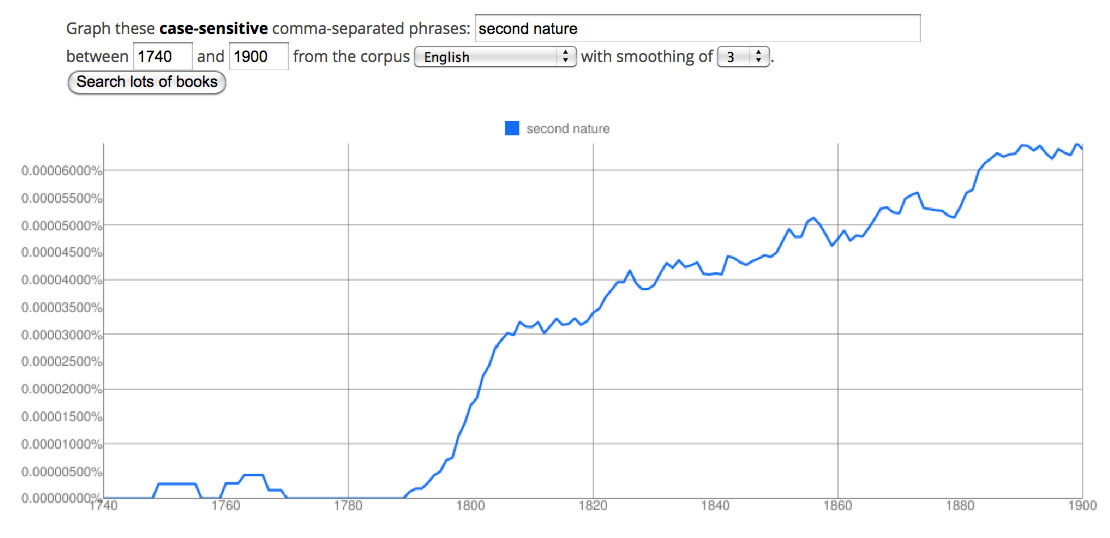My art professor in college just directed me toward this interview with artist Steve Seeley, in which the interviewer describes Seeley’s work as:
figurative work [that] often features the juxtaposition of human bodies and animal limbs, or heads. Sometimes alien parts make an appearance as well. He integrates old and new surfaces, incorporating the nostalgia of his childhood into a present assemblage… Seeley’s icons adopt the iconography of saints and superheros with all of the mystical proportions childhood bears with them. To re-erect and reexamine the Gods of childhood in effort, perhaps, to examine those ancient power structures. In Seeley’s case, they often become hybrid.
I looked through Seeley’s work and found it timely and illustrative for our being in between thinking about hacking and thinking about the monster. The following photo-examples I pulled from Seeley’s Delicate Matter:

![]()
![]()
Though the superhero imagery certainly resonates with a particular nostalgic part of me, it is the two “Icons” that I’ve been coming back to all morning. In a recent tweet, I suggested that the monster essentially is an uncanny subversion of nature, and that we come to fear these monsters out of a deep cognitive dissonance that begins with (is triggered by) their altered appearance, but quickly moves into something much more substantial (and permanent) when we become aware of the fact that the unseen characteristics, and thus the very nature of, the monster must have been altered too. To then make the monster a holy monster is to redefine one’s relationship with the Uncanny from one based in Fear of the Monster to one based in Reverence for the Sublime.
That Seeley has created a narrative for how monsters become, and then become holy, and that such a narrative is the result of human technological developments in space travel, and that the monster is then the natural evolution of life on earth (both in terms of the space-dwelling ‘alien’ men and then earth-dwelling ‘hybrid’ animals) intrigues me to no end:
As for the difference between man and animal, there isn’t a huge difference for me. In the “delicate matter” series, the story so far is that man has left earth for outer space because he becomes enamored with something he can’t comprehend, something that is entirely different from what he knows. He leaves earth on bad terms with the animals and while he is gone animals become what they were destined to be, a transformation per se, into heavy metal loving, super power using, pop culture loving creatures. When man gets to space he finds it to be less than he had hoped, and he tries to come back but the animals refuse. So man is stuck in space while animals take he’s [sic] place back on earth, essentially filling his old shoes, and becoming the new ‘man’…The head swapping was a way for me to even more-so humanize the animals. Initially all the human body, animal headed figures in my paintings were referred to as ‘saints,’ figures that were idolized by the other animals and which usually also adorned halos.
Keats suggests that men of Imagination ought to possess “Negative Capability,” essentially the ability to comfortably occupy a space in which paradoxes, contradictions, and elements of the Uncanny abound, without needing to reach for reason or logic to make sense of the experience. I suspect Seeley’s gesture of finding (transcendent?–or at least substantial) value in the monster, and proving as much by elevating him to ‘sacred’ status via the religious icon, is one way to articulate how it is that we can paradoxically fear and ‘make-holy’ an incomprehensible, Uncanny figure.
Edit: 18 March 2012–An Addition
So now, a month and a half later, I’m thinking about Seeley’s work again: I’m home for Spring break, getting my tattoo touched up, and trying to find a new place on my body to ink the deer Icon posted above. There’s something powerful about the image, something that rings deeply true to me about the way we encounter the sublime-in-the-Uncanny. But perhaps I should back up for a second…
Two weeks ago I was fortunate enough to be able to sit on a conference panel to present a paper I had written–and am obsessively adding to–exploring elements of the Uncanny in prosody, particularly something I’m calling poetry’s “Uncanny Sound.” One of the more apt poems I’ve come across in this project is Hart Crane’s “The Hurricane,” a poem in which Crane, standing in the eye of a hurricane, watching it destroy the world on all sides of him, is forced to create a new language to echo–and enact!–the impressiveness and sublimity (i.e. the ‘too much’-ness) of a natural disaster, a language in which old words are razed to make material suitable for the “Uncanny event” and new words are joined to antiquated, Biblical suffixes to anchor the world in some sense of supernatural history. All of this then comes together in an artificial ‘hybrid’ language of contradictions and anachronisms (one half of poetry’s “Uncanny Sound”) that serves the magnificent power of such an experience well, for as the highs are made low with “summits crashing” and lows are made high when “sea-kelp” goes to “high heaven dashing,” so too is the highest language brought down among base terms and the lowest language elevated to the level of scripture. To speak this poem aloud, I’ve discovered, is to summon the power of the hurricane; to become the hurricane, for a time; to internalize it and bring it in you.
So I’m bringing this up alongside my thinking on the Icons because I sense Seeley’s understanding of the natural world of animals corresponding with Crane’s relationship with the natural world of weather, specifically that there is something unnatural inherent to the natural world, unnatural in that there is such otherness (and power in this otherness) present in the natural world at special times that one simply cannot experience as native, incidental, familiar, or safe, but foreign, deliberate, disorienting, and dangerous instead.
What’s happening in these special moments, I’m thinking, is a shift from what Martin Buber calls an I-It relationship with the world to an I-Thou relationship. The relationship one has with ordinary things as objects of experience and use Buber calls I-It, an essentially “detached” relationship (e.g. the one might have with pen); the attitude of the I here is that the It is separate from himself, an object that can be intriguing to observe or fortunate to use, but nothing more. The relationship one has with others, on the other hand (no pun intended), Buber calls I-Thou, and this “involves the whole person;” here, the I, a meaning-making individual, “addresses” a Thou as a meaning-making subject, not an object, and is thus “addressed” as a subject in return. These I-Thou “encounters,” Buber claims, constitute “real life,” in that they are the only authentic and real (i.e. meaningful) relationships one may expect to find in the world. By addressing the existence of the Thou in another, one effectively moves himself toward an intimate, subject-to-subject relationship with the Ultimate Thou, which is God.
So when I say that
I suspect Seeley’s gesture of finding (transcendent?–or at least substantial) value in the monster, and proving as much by elevating him to ‘sacred’ status via the religious icon, is one way to articulate how it is that we can paradoxically fear and ‘make-holy’ an incomprehensible, Uncanny figure.
…what I’m suggesting is that Seeley is finding in the natural world a Thou, not an It; not a world to simply be seen or projected on or used, but a world that looks back, projects back, and uses.
This is a fairly powerful claim as an artistic statement, but more so as a statement of ‘the nature of things’ (as Lucretius would have it). As we begin to transition further into Romanticism and the Romantic poets–the second half of this Technoromanticism idea we’re orbiting–I think we’ll find this conversation sprouting up again and again, begging us to evaluate and then re-evaluate our relationship to our (un)natural world through art in both the traditional sense (painting, music, poetry) and then the non-traditional sense (?, ?, ?).









